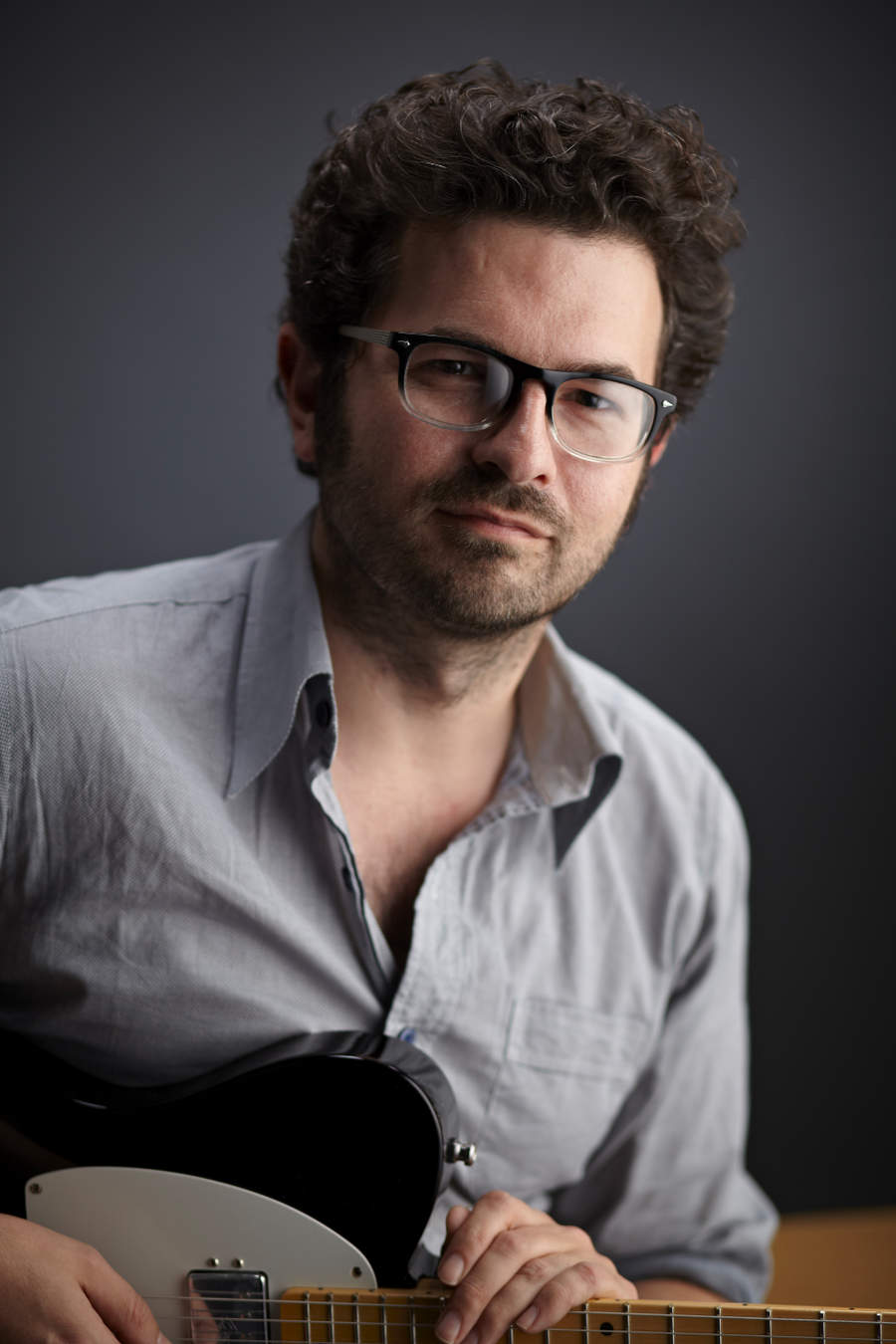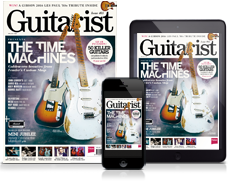Joe Bonamassa talks new album, Strats, Dumbles and Hendrix
"I took a '58 Goldtop, two '59s… I know, don't feel sorry for me!"
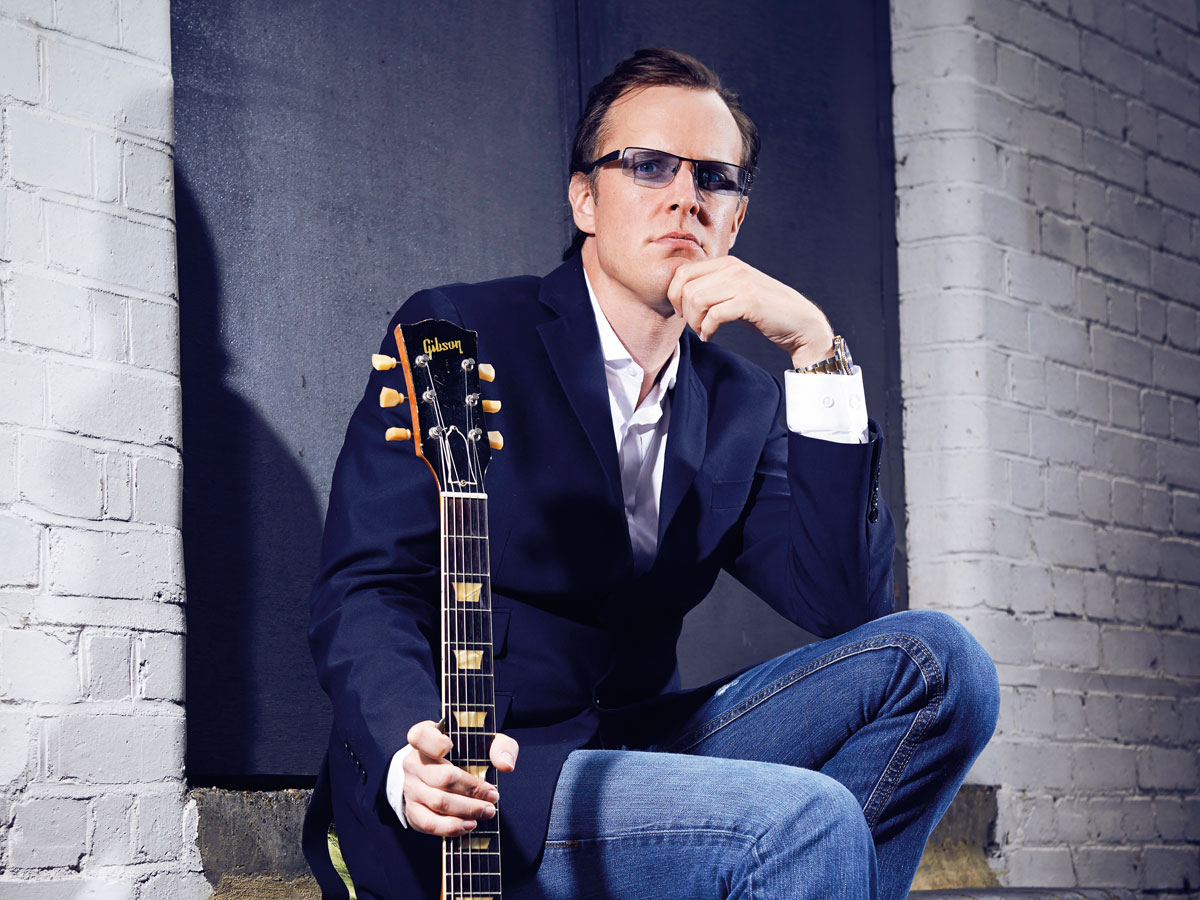
Introduction
“I’ve always been that maverick guy who’s got a very liberal view of what blues is; very open-minded,” Joe Bonamassa reflects. We’re at John Henry’s rehearsal studios in London, the day after Joe performed at Download Festival. By his own admission, it wasn’t a gig he enjoyed all that much.
The hired backline was passable, tone-wise, rather than awe-inspiring - as his own custom tour rig normally is; and to add insult to injury one of the metal acts on the bill was testing its brutally loud amps backstage, very audibly, during his set.
"The new record sees Joe playing with less of the stainless-steel poise that has seen him win an army of fans, but also his share of detractors"
All the same, he’s got a lot to be cheerful about. His new studio album, Different Shades Of Blue, is billed as his first record of original songs (not quite true, in fact, as it begins with an obscure Hendrix cover). Perhaps more importantly, though, it sees him playing with less of the stainless-steel poise that has seen him win an army of fans, but also his share of detractors.
Instead, there’s more recklessness, fire and candour, revealing Joe for what he is at heart: a damn fine player, with hellacious licks and a restless muse. Written with a team of veteran Nashville songwriters acting as lyrical sparring partners and co-writers, Different Shades Of Blue covers a lot of ground, in terms of guitar, too.
“That was really key to unlocking this blues album,” Joe says. “It runs from traditional blues to some things that you’d be very hard pressed to call blues. And that’s the way I’ve always played, writing some stuff that’s in the genre, some stuff that’s not in the genre and some stuff in-between that could be construed as a country song, or a pop song or whatever.”
Settling in to comfortable chairs, we chat with Joe about everything from the magic of maple-necked Strats, to why he believes many players are too reliant on drive pedals. It’s time to ask, hey Joe, where you going with that (lead guitar) run of yours...
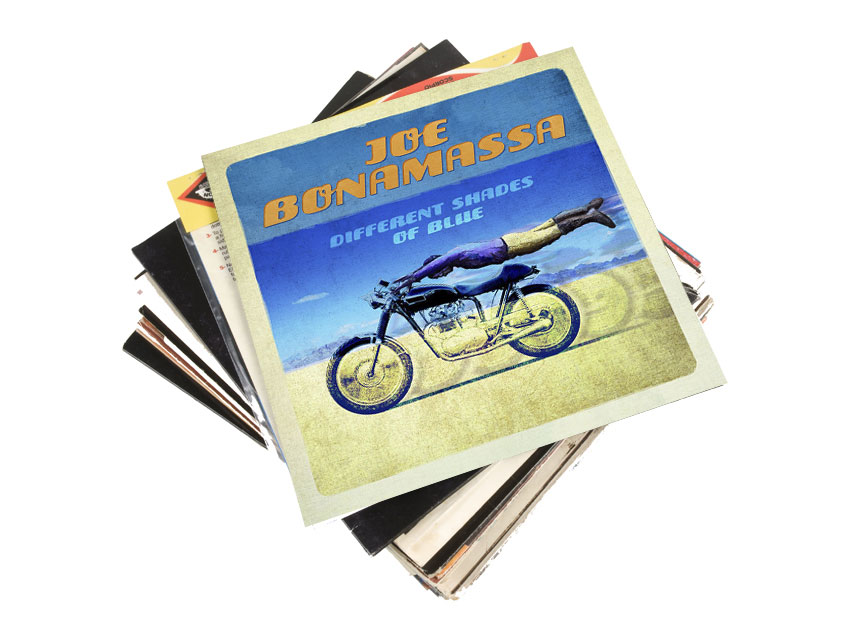
Hendrix hallmark
Why did you decide to kick off the album with a Hendrix tune?
“Two reasons: Kevin [Shirley, producing] played me a really interesting piece of music called Hey Baby, and I’d never heard it. I’d heard Jimi play a little of it at Woodstock but I’d chalked that up as a 7am, Monday morning, end-of-the-LSD kind of thing, because that whole end of Voodoo Child he did at Woodstock appeared to me to be off the top of his head.
"I have fun with the naysayers, because at this point what else can you do?"
“What I didn’t know is in that part was an actual song he’d composed, and we had to ask Eddie Kramer what it was called, because he was there at Electric Lady when Jimi came up with it. It’s very free but it’s got a nice melody and I thought it’d be a very cool way to open an all-original record with a Hendrix cover [laughs].
“And, I have fun with the naysayers, because at this point what else can you do? You can’t take it personally, and one of the things that gets said is that ‘he only does covers and blah, blah, blah’, and so I thought what better way to f **k with them than to open an all-original record with a minute- and-25-second version of Hey Baby? I’m nothing if not childish.”
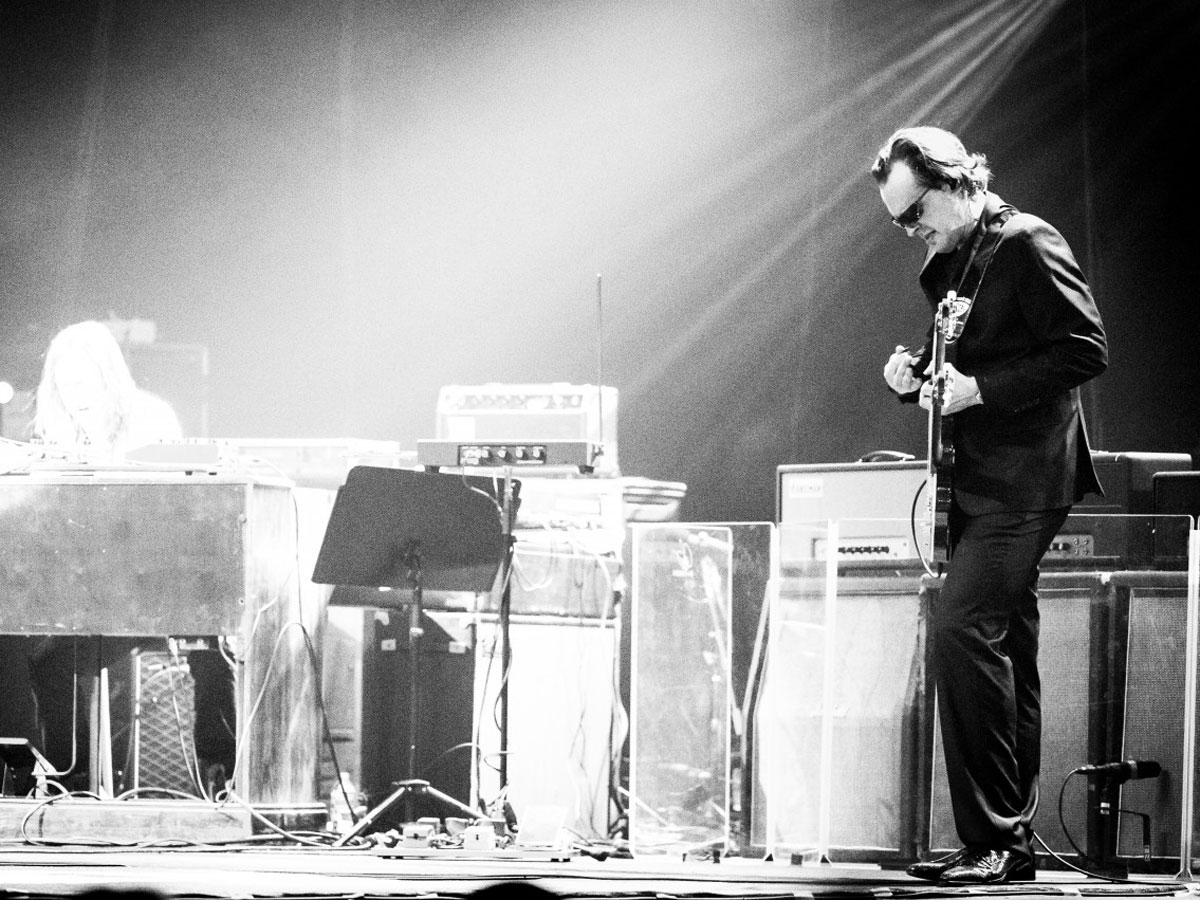
Strat's life
So, have you turned to playing Strats?
“I’m a Gibson guy tried and true, but I’ve been playing a lot more Strat, partly because I’ve rediscovered the beauty of a maple-necked Strat. For years it was commonplace to go, well, the maple-necked Strat is a Buddy Holly guitar and the rosewood neck, slab-’board would be Rory Gallagher, non-slab would be Stevie Ray Vaughan, because they said it’s a ’59 - but it’s not, because you can see the curved ’board pretty clearly.
"I bought this beautiful ’56 blonde-over-ash Strat and I thought: ‘this is magic’"
“Well, that was always the blues-rock Strat, the clichéd sunburst Strat with a big old wear mark on the front and big old frets. But I bought this beautiful ’56 blonde-over-ash Strat - almost like a Gene Vincent and the Blue Caps guitar, and I thought: ‘this is magic’. It has some really wonderful sounds that I’ve not heard come out of a Strat in a long time.
“I mean, I’ve got other 50s Strats, like nine or 10 of them, but this one got me into rediscovering the bolt-on neck. But you know, things go in phases: I play one Stratocaster a night in one song. And I’ve tried to play some of the other material on a Strat just for fun during soundchecks, stuff that sounded so great and so entwined with the Les Paul with a humbucker, that it sounded thin on the Strat no matter how much boost and EQ you added.
“It lacks a little bit of the grunt. But for certain songs, it’s perfect. There’s a reason why the Strat is so popular - because they are perfect for certain things. Same thing with a Les Paul: you can’t play sparkly Sultans Of Swing stuff very well on it.”
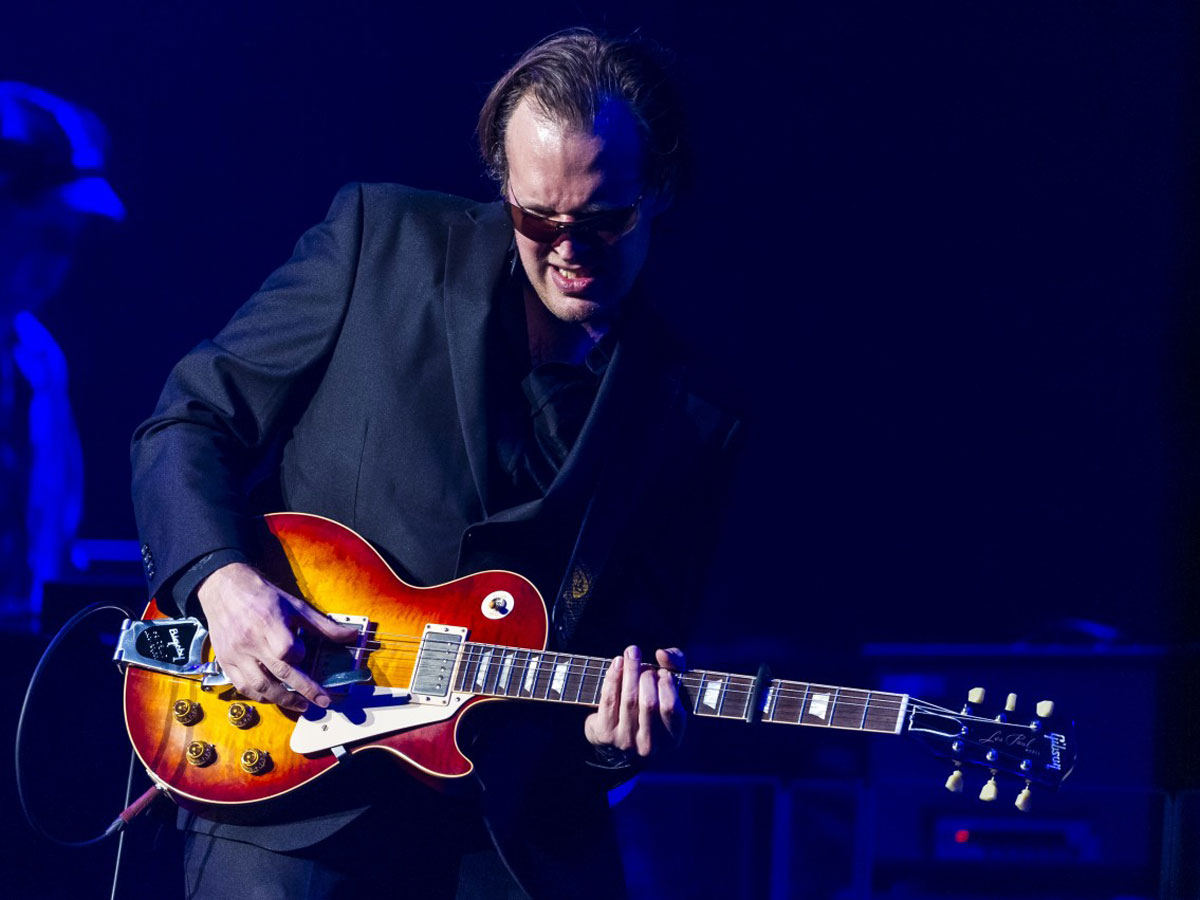
Better be Bigsby…
You use a lot of vibrato bar on Get Back My Tomorrow - but the tone sounds a little beefier than a Strat...
“That’s actually a Bigsby. I have a couple of new Strats I keep around for the Jeff Beck thing because I don’t want to break the bar off of my old Strats. But honestly, one of the coolest and most unsung whammy bars is the Bigsby.
"Make sure you apply a liberal dose of Big Bends Nut Sauce, so every time the strings go back and forth they come back to the same place"
“And people say you can keep them in tune - well, not necessarily, but you have to use this stuff called Big Bends Nut Sauce. And you make sure you apply a liberal dose of that to the nut, so every time the strings go back and forth they come back to the same place - and the same thing goes for a Strat.
“Once you get your head around that and get them set up, you can get a lot of cool whammy bar stuff out of them. You can even pull up on a Bigsby. Just don’t go too far, because the spring will pop out and the whole thing will collapse! I did that a few times.
“But, yeah, that guitar on Get Back My Tomorrow is a ’58 Goldtop with a Bigsby. I have the original receipt for that guitar: $224, plus $47.50 for the four-latch case! But back in ’58 that was probably like four grand, adjusted for inflation.”
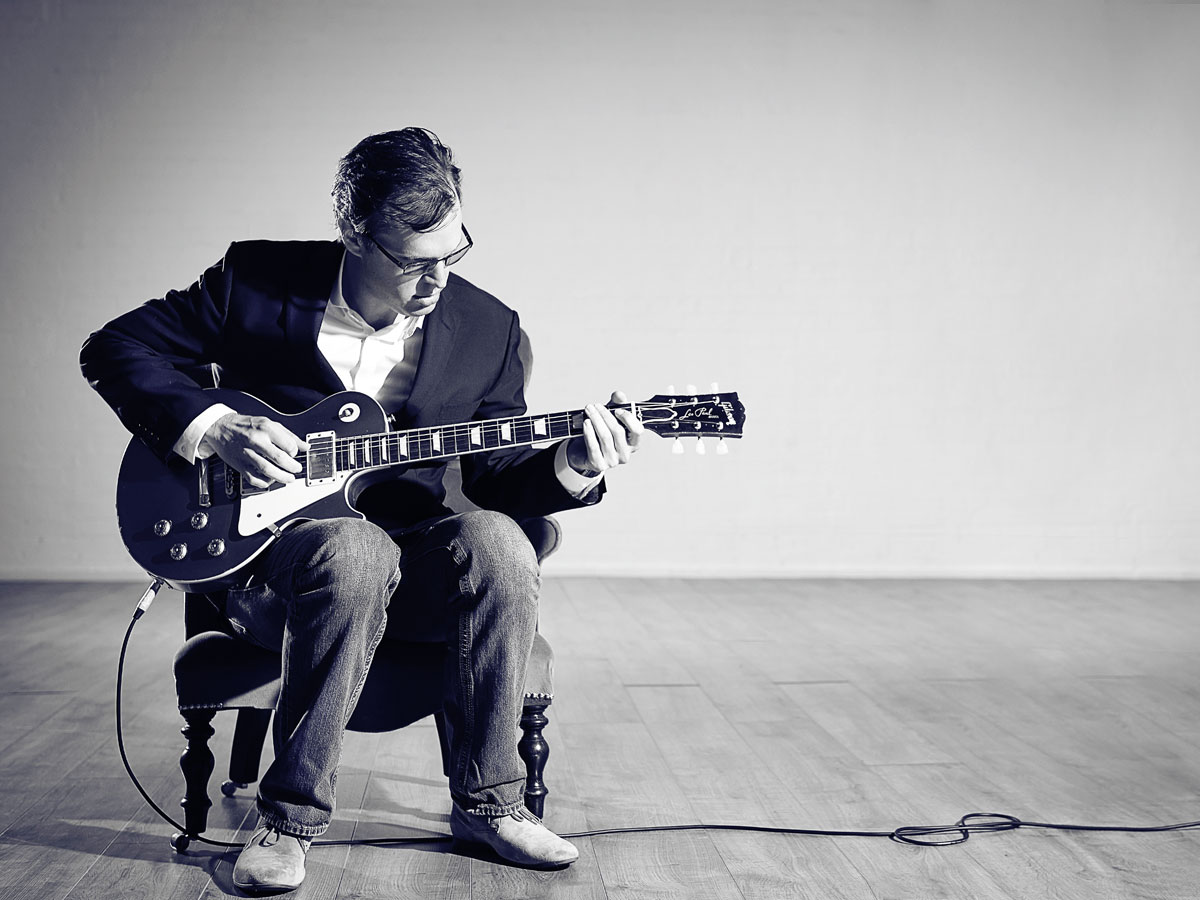
Beautiful blues
Oh Beautiful is an interesting track - like a Delta blues lament followed by a psychedelic rock wig out...
“I wanted to do an a cappella verse song for a long time. And I wrote the lyrics with my friend James House. So I said, ‘I got this riff and I wanna stop the riff and then sing a verse’. So he goes, ‘Okay, so is there gonna be a chorus?’ And I go ‘No. There’s gonna be a verse, another set of riffs, another verse,’ and he goes, ‘Well what about the mid-section? Is there a bridge?’ ‘No.’ And he said, ‘Wow, it’s gonna be really interesting.’
"Kevin [Shirley, producer] said, ‘You’re playing a lot of your ‘stock’ riffs... [He] kept on about that - and he’s right"
“Meanwhile, in the back of my mind I’m thinking ‘what’s my favourite a cappella verse song?’ It’s Oh Well [by Fleetwood Mac], so it’s the same structure as Oh Well in that the singing is over nothing: there’s a melody and that’s it, and then the mid-section goes off into this heavy thing.
“And we cut that in three takes, the last being on a Tele. Because Kevin said, ‘You’re playing a lot of your ‘stock’ riffs, and I’m like ‘Okay, well thank you...’ But Kevin kept on about that - and he’s right. He said I have a ‘default’ setting when it comes to playing guitar. I have my ‘faux Eric Johnson’ thing I do, and a few other things I do that are basically ‘default settings’.”
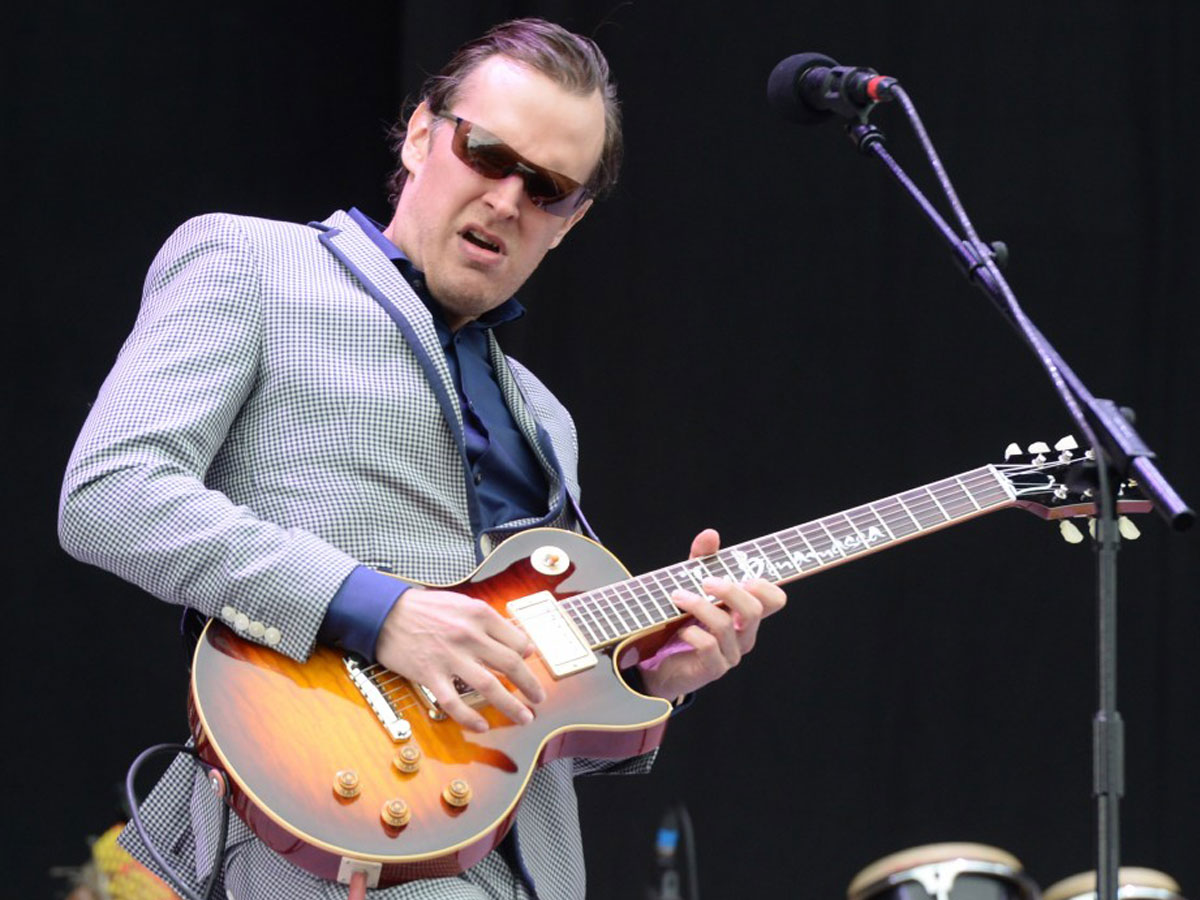
Default licks
When do you find yourself lapsing into ‘default’ licks?
"Kevin wanted this album to be very much about poignant, direct and reckless playing - that was really the key"
“My ‘default setting’ comes when my head’s trying to catch up to my playing. But Kevin wanted this album to be very much about poignant, direct and reckless playing. And that was really the key to having this raw side to it. I really applaud him for it because he had to keep on at me over and over.
“Because I have these visions of what a solo should be in my head and a lot of times, in the studio I’ll just do that and just tweak it a little. But most of the soloing on this album is played live. So I picked up a Tele and I played the third take of Oh Beautiful all the way through, and played the solo all the way through. As soon as we did that, it became one of the centrepieces of the album.”
You get a really savage tone with the Tele on that track. How?
“It’s a Tele with an [EHX] POG. The riff is a POG.”
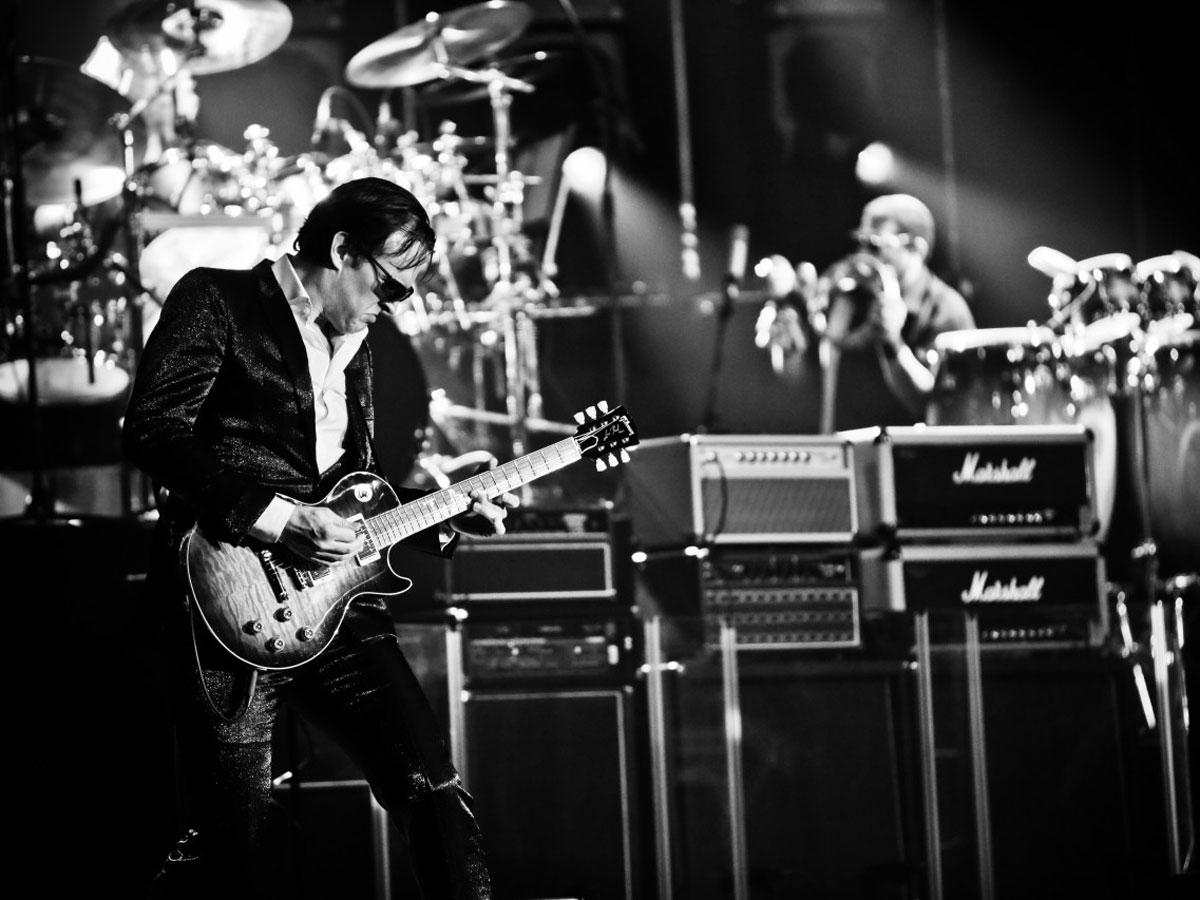
A new Page
Playing in that way seems to have brought out a touch of the Jimmy Page in your playing...
"He’s already on Mount Rushmore, because he’s Jimmy Page, but he’s a much deeper musician than a lot of people think"
“Well, he’s in my top five - certainly of the British blues guitarists. We covered a song called Tea For One [from Zep’s Presence album] and we also did No Quarter. And when I was learning the songs, something that seems intrinsically simple - you’d think, okay, it’s pretty straight-ahead - but to play it...
“I mean, he’s already on Mount Rushmore, because he’s Jimmy Page, but he’s a much deeper musician than a lot of people think. His playing can sound reckless but very imaginative and original- sounding. He doesn’t need my endorsement but he’s definitely one of my favourites.”
What rig did you bring into the studio? I know you’ve tweaked your live setup a fair bit recently...
“Yeah, for a year I decided I wanted to use Marshalls - old Marshalls - and a reverb tank. And then I decided I wanted to go back to my original focus, which was stacking midrange. So in the studio - and don’t feel sorry for me, ever, by the way - we had four Dumbles, three of which were my own, and one I borrowed from a friend.
“We had two high-powered tweed Twins, one ‘blackface’ twin, one ‘blackface’ Vibroverb, and a full 1966 Marshall Super PA stack. I also had two Jubilees and one brown Deluxe and a brown reverb tank.”
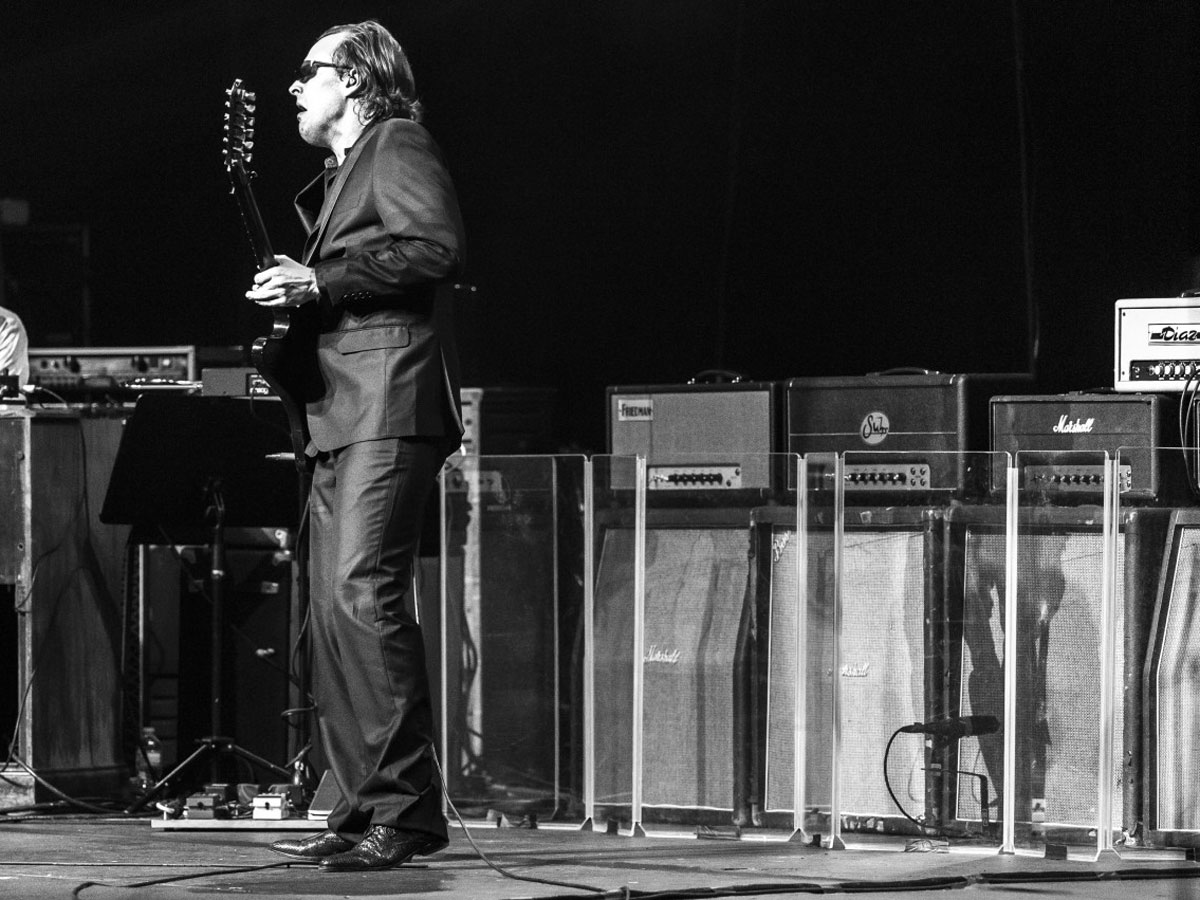
Amps galore
How did you pick which Dumbles, Fenders and Marshalls to use on each track?
"The brown Deluxe - that’s the ‘sleeper’, and it’s one amp everybody should have. They cost less than a tweed, but put a mic in front of them, they’re just on fire"
“Stuff like the shuffles are all high-powered tweed Twin, and the swampier things like Trouble Town and Livin’ On The Moon, that’s a brown Deluxe - that’s the ‘sleeper’, and it’s one amp everybody should have. They cost less than a tweed, but put a mic in front of them, they’re just on fire. So it’s a combination of stuff - like Oh Beautiful is the POG and EVs: the reason the bottom end is so tight is because of those EV speakers.
“I learned yesterday at [Download] Donington that a POG into Celestions, they don’t like that... it just collapses. And so the EVs were essential to that sound. I’d pair them with two Marshalls, or with one Jubilee and two Dumbles, which is a lot bigger sound, and one I’m associated with. I borrowed a 1966 Bluesbreaker combo - the wide-panel model. I used that with a reverb tank on Never Give All Your Heart.”
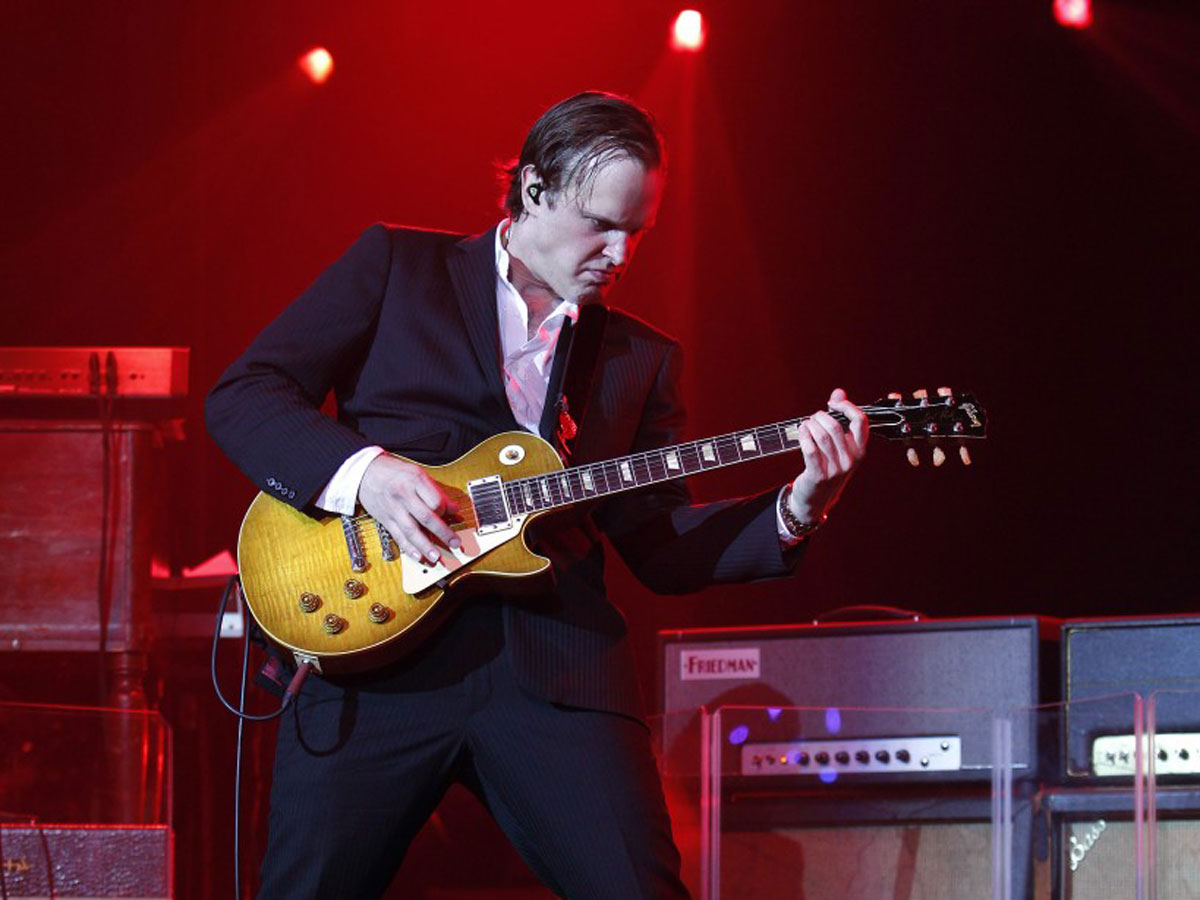
Simple tones
Your lead tone is fat and hugely sustaining. Do you ever use pedal compression to add sustain?
“The only time I’d ever use a compressor would be on something like that Beth Hart record, where I needed a really clean Tele tone - that real James Burton sound. In the studio it just makes it come right forward. I don’t believe in compression on overdrive because the amp should compress naturally.
"Every dynamic tone that you’re seeking is right there, naturally. If you know how to manipulate the volume"
“A lot of times, I disagree with the way some people set pedalboards up: they’ll end up using beautiful old amps as nothing but power amps. Because all their overdrive is on the pedals, and if they want squishynesss they’ll add a compressor, and if they don’t like the overdrive they’ll say, ‘Okay, let’s go to another pedal that an Internet forum says everybody has to have’, or they’ll say, ‘Well, this pedal sounds wrong and I can’t fix it because it’s gooped...’
“But all they gotta do is unplug and plug straight into that [gestures at amp] or whatever. Every dynamic tone that you’re seeking is right there, naturally. If you know how to manipulate the volume. I meet a lot of guys who try my rig and they go, ‘Well, what do you use for a clean amp?’ And I say, ‘This is fine’.”
“Whether you’re playing a gig that requires a five-watt amp or a 50-watt amp, or 500 watts of tube power, everything needs to be proportional, so you have enough clean headroom in order to roll it down, so that when it compresses into that nice blooming sound you’re going to be much more happy than if you’d just used a pedalboard [to achieve them same effect]. So compression is good for some things, but mostly with clean tone.”
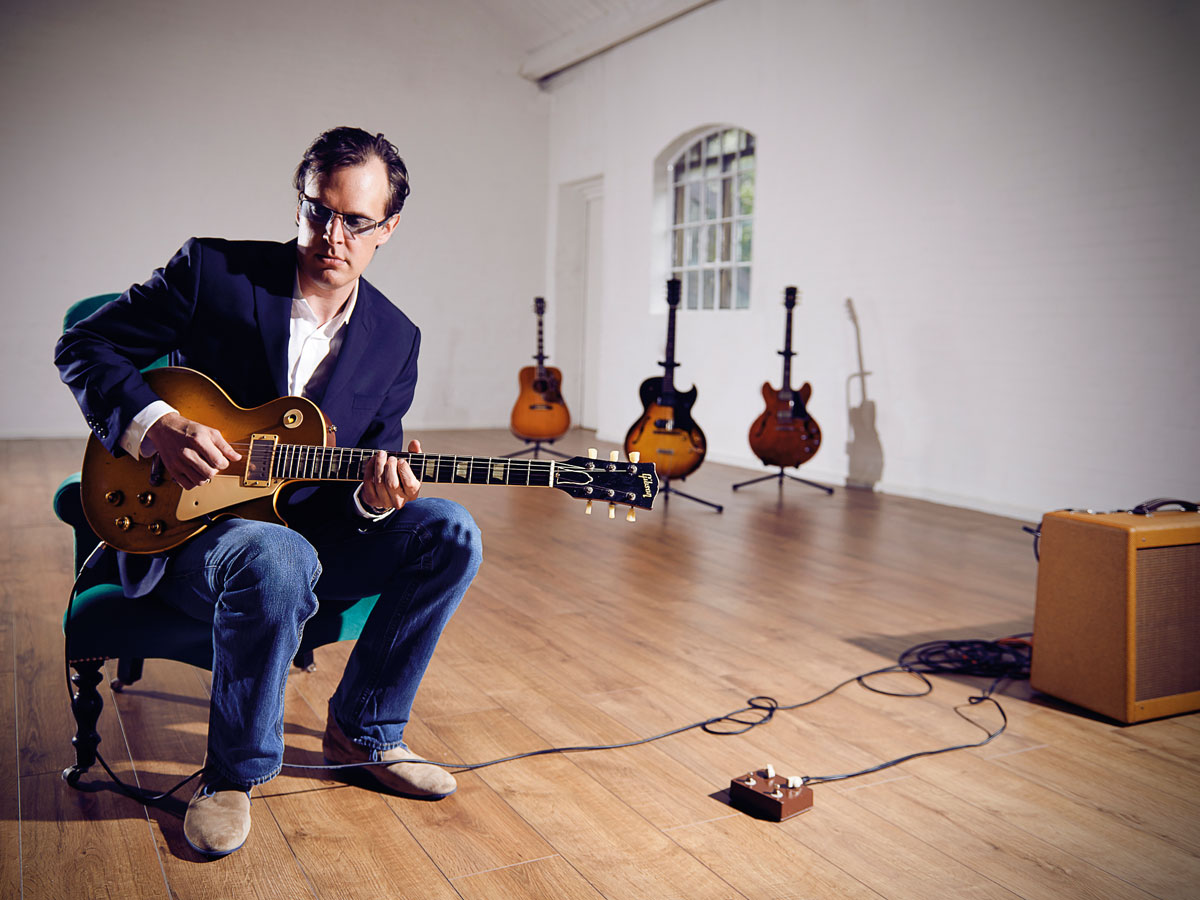
All-star guitars
How about guitars - did you bring many into the studio?
“Not as many as I would normally take. I just took what I knew would work: a pair of blackguard Teles - a ’52 and a ’53 Tele - a ’56 Strat, ’63 Strat, and a ’65 Strat. Actually, I didn’t take that, I bought it in Vegas [where the album was recorded] and took it home.
“I took a ’58 Goldtop with a Bigsby, two ’59s - I know, don’t feel sorry for me! - and I took my dot-neck 335 and I took my block-neck ’64, my ’57 ES-350, my ’57 Special and I took the ’58 EDS-1275, the thick-body doubleneck. And for acoustics, I brought probably six or seven... some Martins, my Grammer Johnny Cash, and a 12-string.”
What do you hope people will say about your first album of original songs?
"That’s the biggest compliment: that you wanna listen to it over and over"
“Every time I write an album, it’s so hard to forecast the future or look back. For lack of a better term, I just feel sometimes all I do is carve out this little style of record, this blues fusion... whacking things all together.
“And some people cherry-pick songs they like and leave songs they hate, and that’s why everyone’s got an iPad or iPod, but hopefully they’ll listen to this album again and again. That’s the biggest compliment: that you wanna listen to it over and over. If you do one listen and it’s out, it never sunk in.”
Different Shades Of Blue by Joe Bonamassa is out on 22 September on Mascot/Provogue.
Jamie Dickson is Editor-in-Chief of Guitarist magazine, Britain's best-selling and longest-running monthly for guitar players. He started his career at the Daily Telegraph in London, where his first assignment was interviewing blue-eyed soul legend Robert Palmer, going on to become a full-time author on music, writing for benchmark references such as 1001 Albums You Must Hear Before You Die and Dorling Kindersley's How To Play Guitar Step By Step. He joined Guitarist in 2011 and since then it has been his privilege to interview everyone from B.B. King to St. Vincent for Guitarist's readers, while sharing insights into scores of historic guitars, from Rory Gallagher's '61 Strat to the first Martin D-28 ever made.
